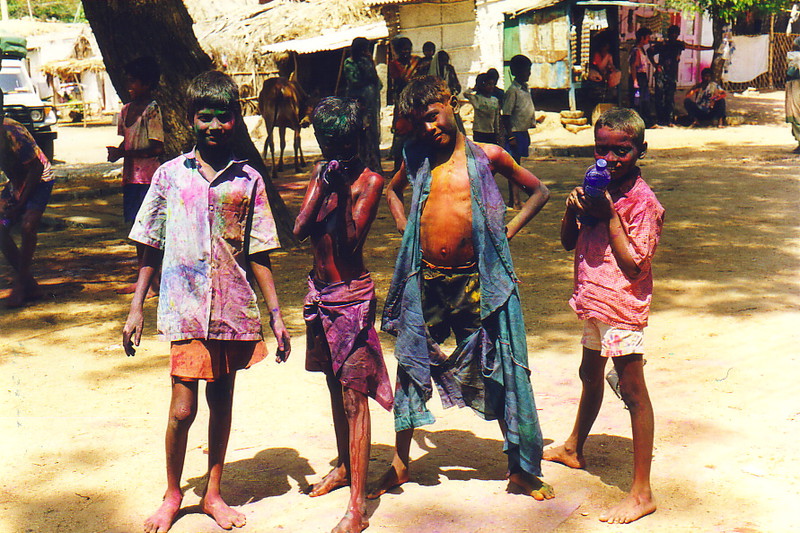
As a therapy, regression often proves effective. From the simple weekend routine of playing knock-about football with your mates, to the psychologically intriguing exploits of businessmen who dress up in nappies and suck their thumbs in oversize cots while paying a mistress a small fortune to act as their mummy, reverting back to childhood is a glorious release from having to fake an adult outlook every day. Not surprisingly the Indians are fully aware of the positive energies associated with regression, but typically they manage to make it feel far less Freudian and far more fun; and to cap it all, they've set aside one day a year, Holi, that's wholly dedicated to slipping back into childhood, or at least that's how it appears from the outside. There is a religious significance, of course, but then Christmas is a religious holiday too... apparently.
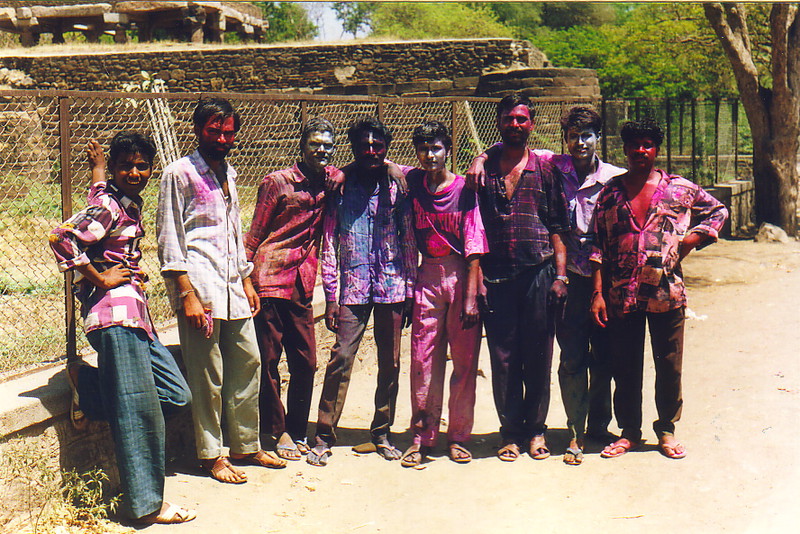
Holi is an annual holiday celebrated on the full moon in March, purportedly to say goodbye to winter and hello to warmer weather. This is why Holi is mainly a northern festival, because in the south the last thing people want is for the pleasant temperatures of winter to turn into the humid tandoori oven of summer. Hampi is a delightful exception, possibly due to the tourist influx, though the day that we celebrated the coming of hotter weather, it was scorching enough to make the balls on a brass monkey dangerous to touch. Still, as with most festivals, the original reason for celebrating Holi has all but been sidelined in favour of the festivities themselves; thus the bonfire the night before, lit as a symbol of the destruction of the evil demon Holika, isn't so much a spiritual affair as a chance for the locals to slap on the western dance music and leap around the streets, annoying the policemen and singularly failing to light the fire until most of the spectators have drifted off to sleep. But the bonfire is only one bit of Holi; the best part is saved for the day after the full moon.
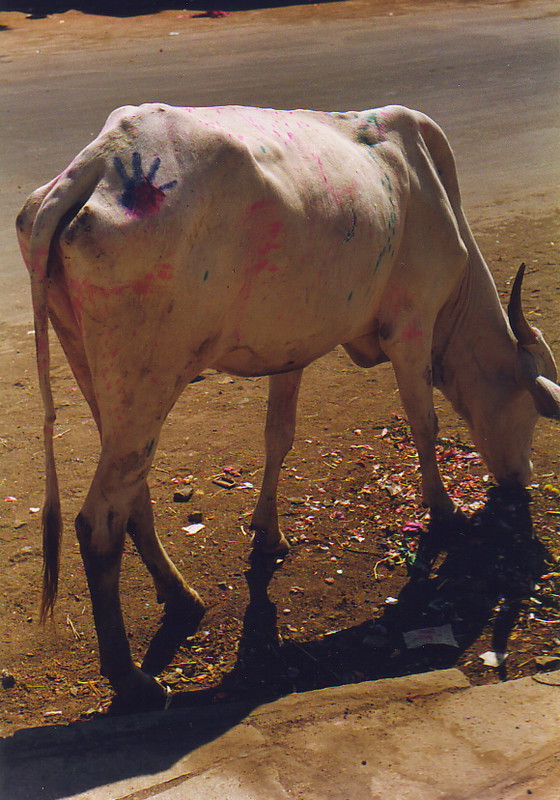
Holi is all about colour, namely colour in the hair, colour on the face, colour on your clothes, colour all over the streets and colour just about anywhere it'll stick. The colour itself takes the form of tika powder, either thrown au naturel or added to water and squeezed from a plastic bottle; it pays to wear grotty clothes on Holi (so I simply chose randomly from my collection of sun-bleached and laundry-battered garments) because if you play with tika powder, everyone's a winner bar the clothes.
The mayhem goes on all morning. Fuelled by copious amounts of bhang, the locals dance around to the beat of tin drums, smothering themselves and any unwary passers-by in a psychedelic dream coat of purples, blues, yellows, reds and greens, managing to attract a sizable collection of manic westerners on the way who join in with characteristic energy. Five minutes after joining the throng it doesn't matter whether you're white or black, because everyone is purple; a couple of hours later and clean people are not only a rarity, they're targets. The streets run purple, buildings drip with missed shots, cars look as if they've been hit by multicoloured bird shit and tentatively the women of Hampi, who have sensibly hidden themselves away for the madness, come out of the woodwork, vainly trying to recognise friends and family through the layers of pigment.
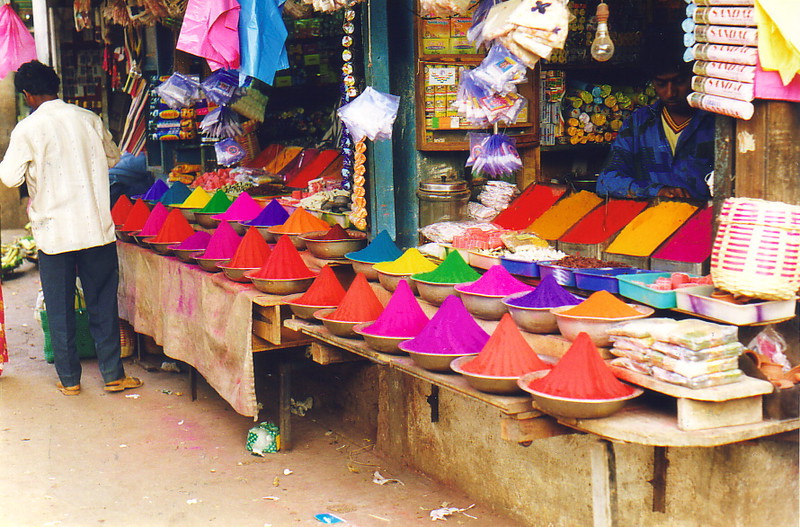
And before long, half the population of Hampi is down at the ghats, scrubbing and soaping in vain as they realise that not only does tika powder stain like buggery, it doesn't react to traditional ablution methods at all. Soap slides off skin, leaving pink splatter marks plainly visible; shampoo might add Vitamin B5 to the follicles, but it doesn't shift the streaks. In fact the only thing that even pretends to work is rubbing with sand, physically removing layers of coloured skin, and leaving everyone exhausted but happy. It seems that one of the side effects of baptism by Holi water is a healthy glow, if you count purple, yellow, red, green and blue as healthy, which, judging by the smiles, everyone here does.
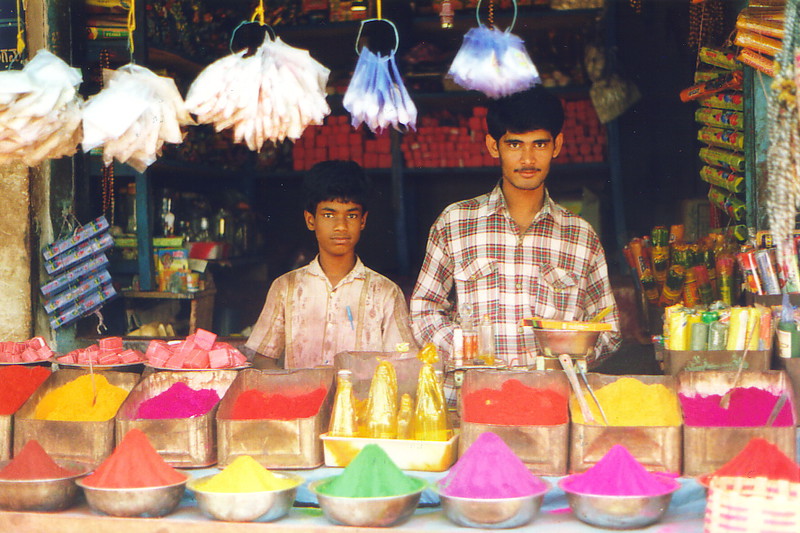
But nobody cares, and indeed it's kind of entertaining to be slightly stained for the week after Holi; everyone knows what you've been up to and grins maniacally as you wander past with your pink face and green hair. It took 1977 and the Sex Pistols to bring colourful anarchy to England, and then it came with an extended middle digit; the Hindus have known about it for centuries, and it's a darn sight more fun when it involves staining your friends (and with tika rather than spit).
And you don't have to wear safety pins through your nose, either...